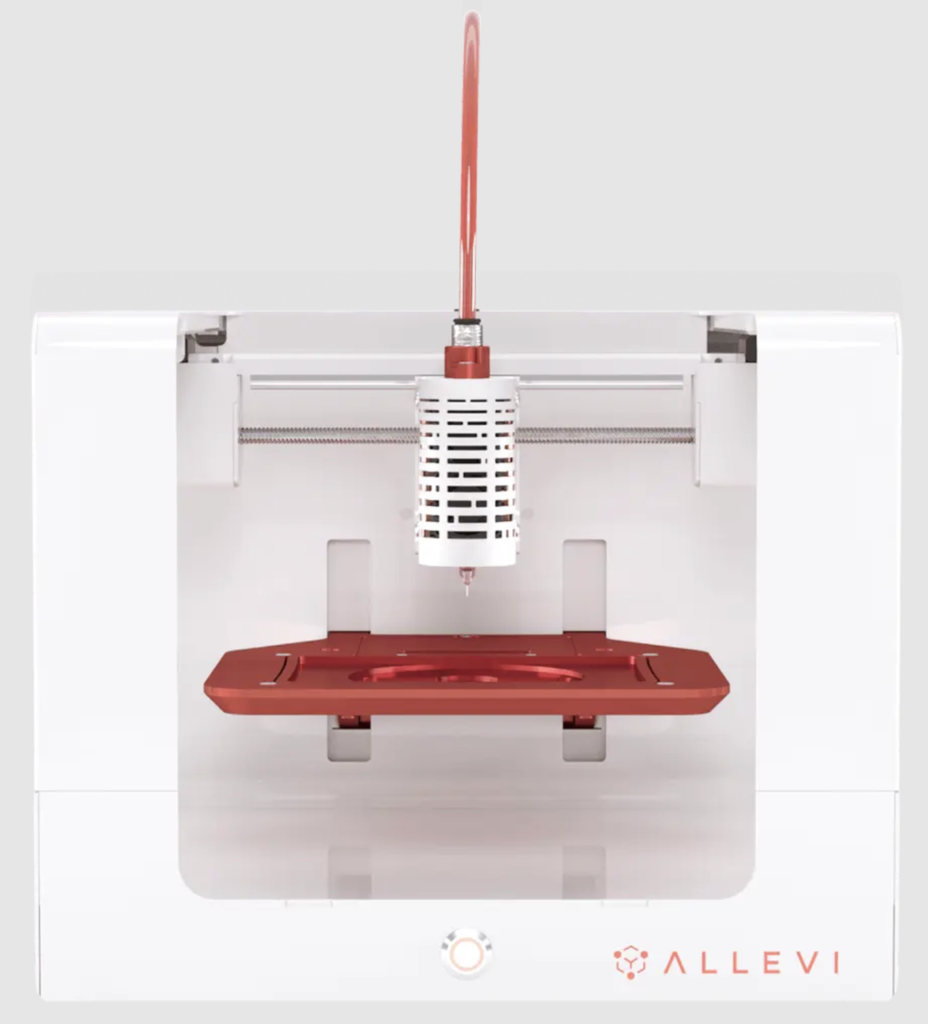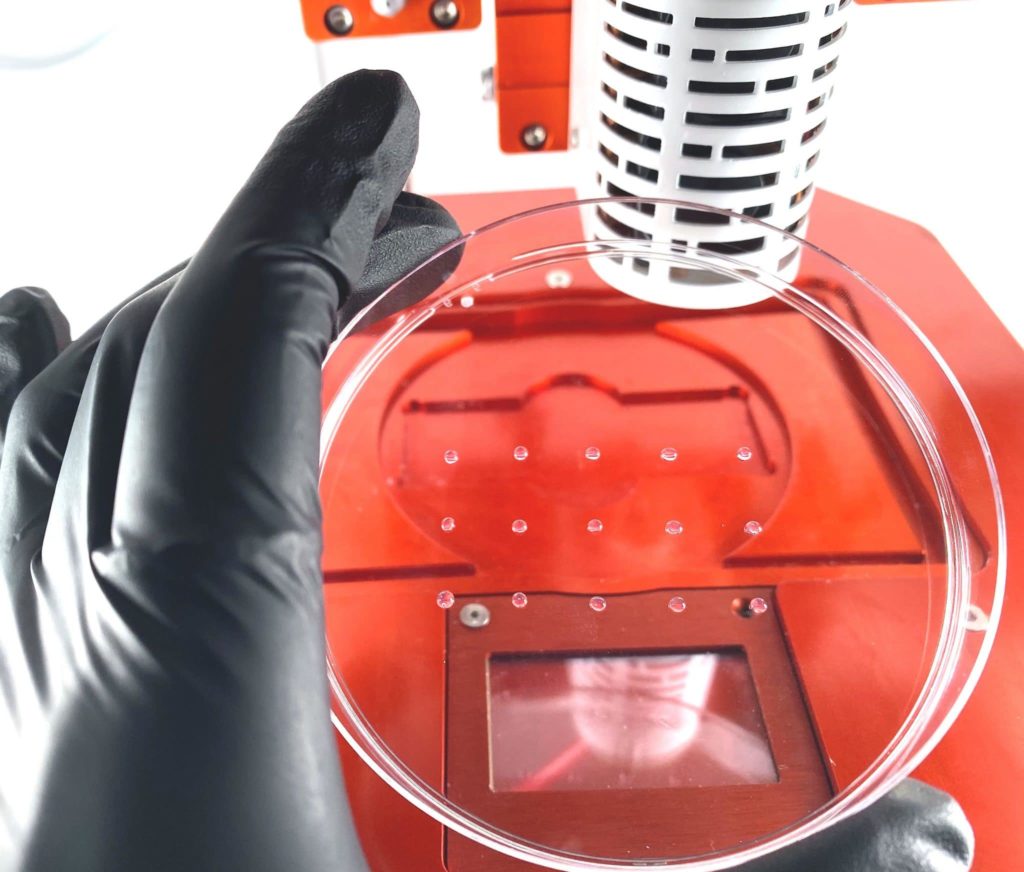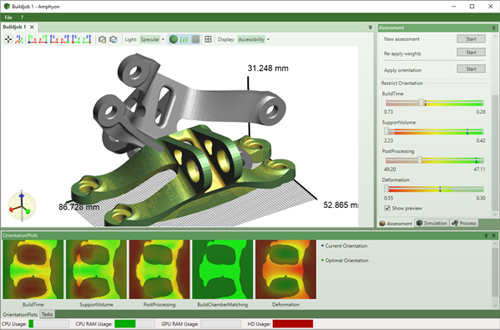When we spoke to 3D Systems (NYSE: DDD) CEO Jeff Graves on the 3DPod, he talked of a strategic refocus and the possibility of future acquisitions. On the podcast, Jeff was bullish about bioprinting and regenerative medicine, as well as software. Today’s acquisitions of bioprinting company Allevi and 3D printing simulation company Additive Works fit 3D Systems’ growth strategy, as well as what Jeff told us.

Bioprinter and bioink manufacturer Allevi already has foot print in more than 380 medical and pharmaceutical labs across over 40 countries, according to 3D Systems.
The company also states that, “Through the addition of Allevi’s technologies and expertise, 3D Systems plans to develop laboratory and human applications in the near-term and medium-term, and enable the development of human organs in the long term. With these building blocks in place, and the pace of development activities toward specific, high-impact applications rapidly accelerating, the company is uniquely positioned to be a leader in this emerging medical market.”

Allevi and Corning Matrigel matrix new protocol (Image: Allevi)
Allevi makes entry-level bioprinters and over the years has done work in 3D printing with matrigel, made a coaxial extruder, made liver-specific bionks, and printed bone. We’ve interviewed Allevi CEO Ricky Solorzano previously. Allevi’s printers and inks made bioprinting accessible. The company also offered various upgrades and tool head kits to extend the functionality of the 3D printer, like this triaxial nozzle. In recent years the much better capitalized and aggressively growing Cellink seemed to outpace Allevi.
Cellink, whose founder we interview here, was quickly developing a line of bioprinters and solutions across many organ systems and different technologies. Head-on competition from Allevi would have been difficult against the extensive portfolio Cellink has. An exit to 3D Systems, then, surely does make sense for the team to let their systems go on to flourish. For 3D Systems this can’t have broken the bank and is an easy and direct path towards bioprinting products, installed base and contacts. For them it credibly advances their go to market by many months and it would seem like an astute buy for the company.
3D Systems can wait for its stereolithography business to be eaten up from below by Chinese competition and new startups or direct threats from the likes of Stratasys, that now has Origin and RPS products in its stereolithography lineup. This is not a very hopeful prospect, so it looks like the company is moving where the margins are toward a bioprinted future. It could get crushed by machine tool companies such as DMG moving into its business or instead be a giant among minnows in bioprinting (along with the huge J&J and Roche). This is smart thinking by Jeff & Co. and their stock price will benefit from this.
It also fits nicely with the 3D printing stalwart’s existing achievements in bioprinting, which involves the use of the Figure 4 stereolithography system to 3D print “large, vascularized, highly detailed hydrogel scaffolds at rapid speeds” that are then permeated with living cells. This has led to fully vascularized lung models.
At the same time, the company has expanded in the software realm by acquiring Additive Works GmbH, a German simulation company. 3D Systems explains the logic of the acquisition thusly:
“Using sophisticated algorithms, accessed through a user-friendly interface, Additive Works’ software allows a manufacturing engineer to rapidly determine optimum print set up, such as part orientation and support structures as well as directly adapt the process set up for effective thermal management and distortion compensation. This highly automated simulation software, which interfaces seamlessly with leading CAD systems as well as 3DXpert and other print platforms, increases productivity by reducing set-up time while improving product yield, throughput, and component performance. The result is a faster, more reliable manufacturing process, reduced part cost, and improved component performance.”
Additive Works’ products are at the nexus of software and production and can really give customers a lot of value. By simulating setups and builds, efficiencies can be gained and prints can be optimized. Especially if optimal support strategies can be made and if build failures can be avoided, this can be of real help to customers. Integrating this suite into 3D Systems’ existing offering could bring value for the firm and the company. On the whole, similarly to the MES companies 3DTrust and Link3D, this is probably an acquisition of a cash-poor company with rich long-term prospects.
“We continue to deliver on our four-phase plan with an increasing focus on investing for accelerated growth and profitability. I’m excited by the expertise, capabilities and technologies we are adding to the 3D Systems portfolio with Allevi and Additive Works. Through these investments, we are enriching our solutions portfolio to address a much broader healthcare market, including the extremely exciting market for regenerative medicine, while accelerating the adoption rate for AM across industrial applications. These investments will bring added value to our customers, open new markets for our technology, and result in accelerated growth and profitability that will allow 3D Systems to thrive in the exciting years ahead,” stated 3D Systems CEO Jeff Graves.
After profligate acquisitions 3D Systems was returned to a solid footing by previous CEO VJ, who changed the company from a flotilla of life rafts to a going ship of the line. Now, Jeff wishes to steer this ship towards profitability and growth by making people’s lives easier with software and lengthening them through regenerative medicine. It sounds like a good plan for the public firm to focus on the future. As long as they do this is in a steady and constructive way, they’ll make headway.
Subscribe to Our Email Newsletter
Stay up-to-date on all the latest news from the 3D printing industry and receive information and offers from third party vendors.
You May Also Like
3D Printing Webinar and Event Roundup: May 5, 2024
We’ve got a busy week of 3D printing events ahead of us, in Texas, Florida, Washington, D.C., Shanghai, and more. Webinar offerings will cover medical models, PolyJet 3D printing, additive...
High Stakes, High Speed: KVG Acquires 15 Nexa3D HSE 3D Printers to Boost Military Tech
As 3D printing increasingly intersects with defense and military logistics, a new partnership between Nexa3D and mission support logistics firm KVG stresses the growing importance of this technology in strategic...
Construction 3D Printing CEO Reflects on Being Female in Construction
Natalie Wadley, CEO of ChangeMaker3D, could hear the words of her daughter sitting next to her resounding in her head. “Mum, MUM, you’ve won!” Wadley had just won the prestigious...
3D Printing News Briefs, February 17, 2024: Shot Blasting, Service Bureaus, & More
In today’s 3D Printing News Briefs, we’re starting out with post-processing, as SKZ Würzburg is using a shot blast system from AM Solutions for its research. Moving on to business,...
































